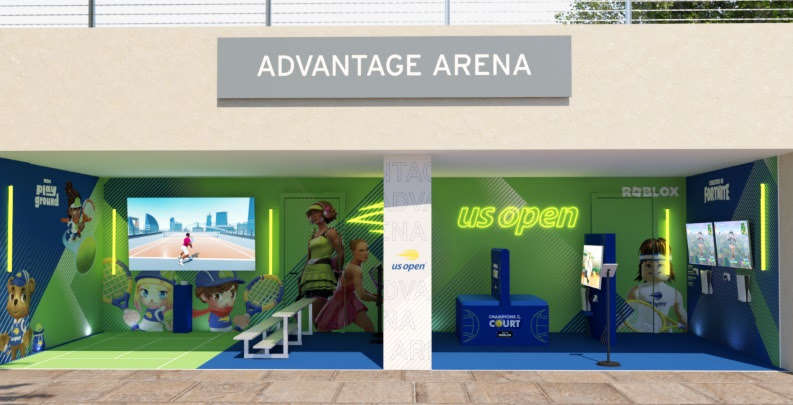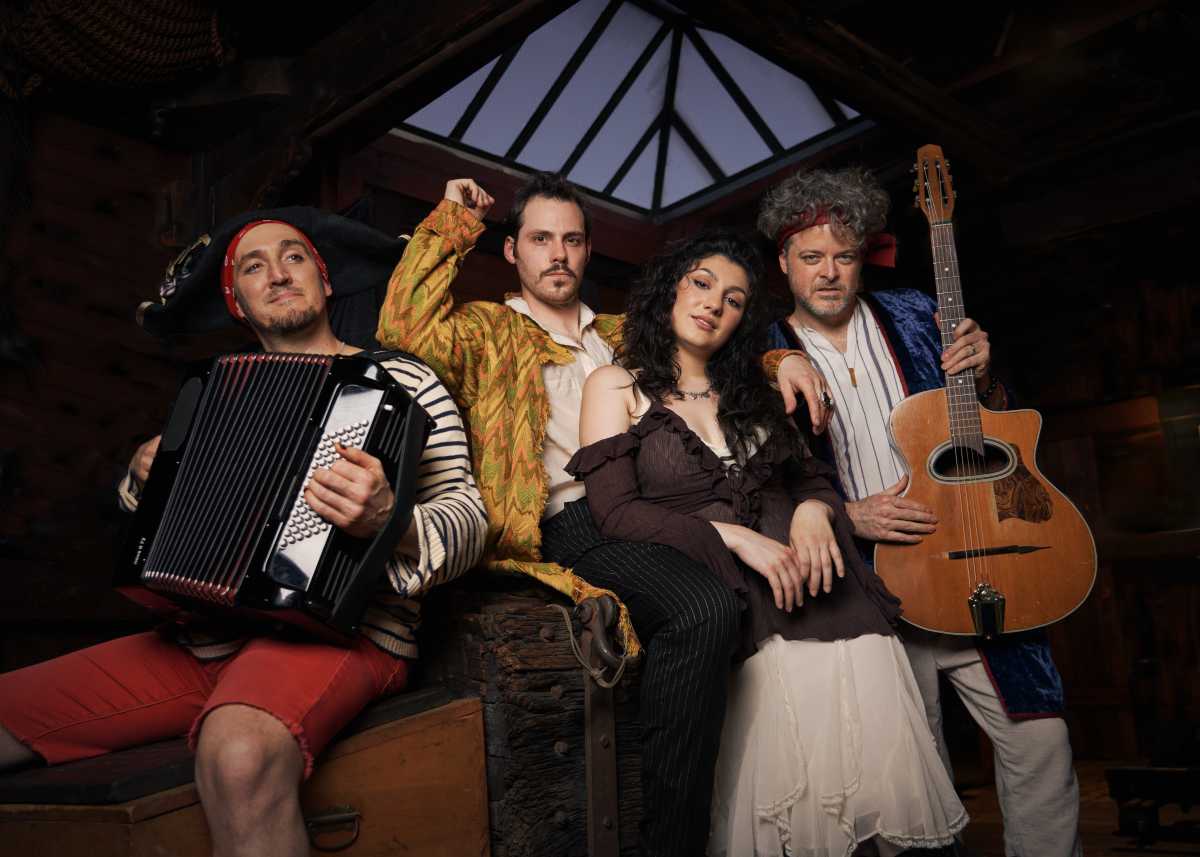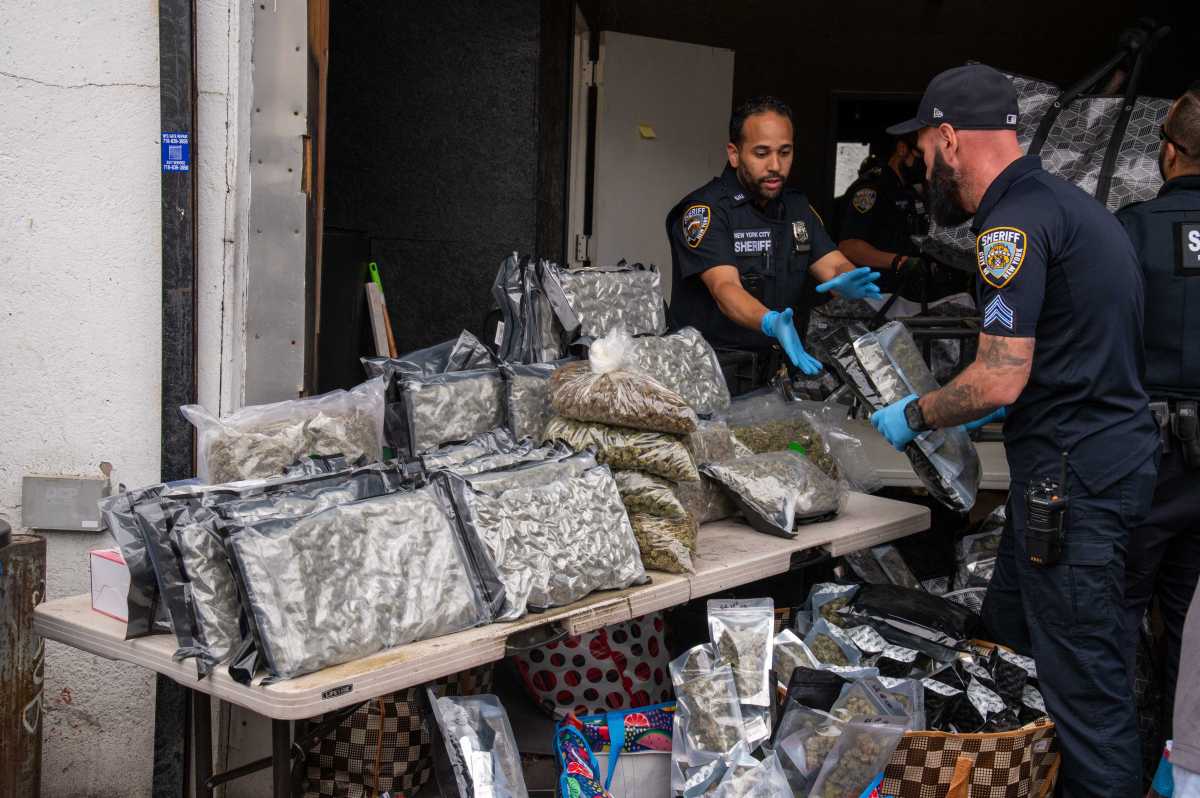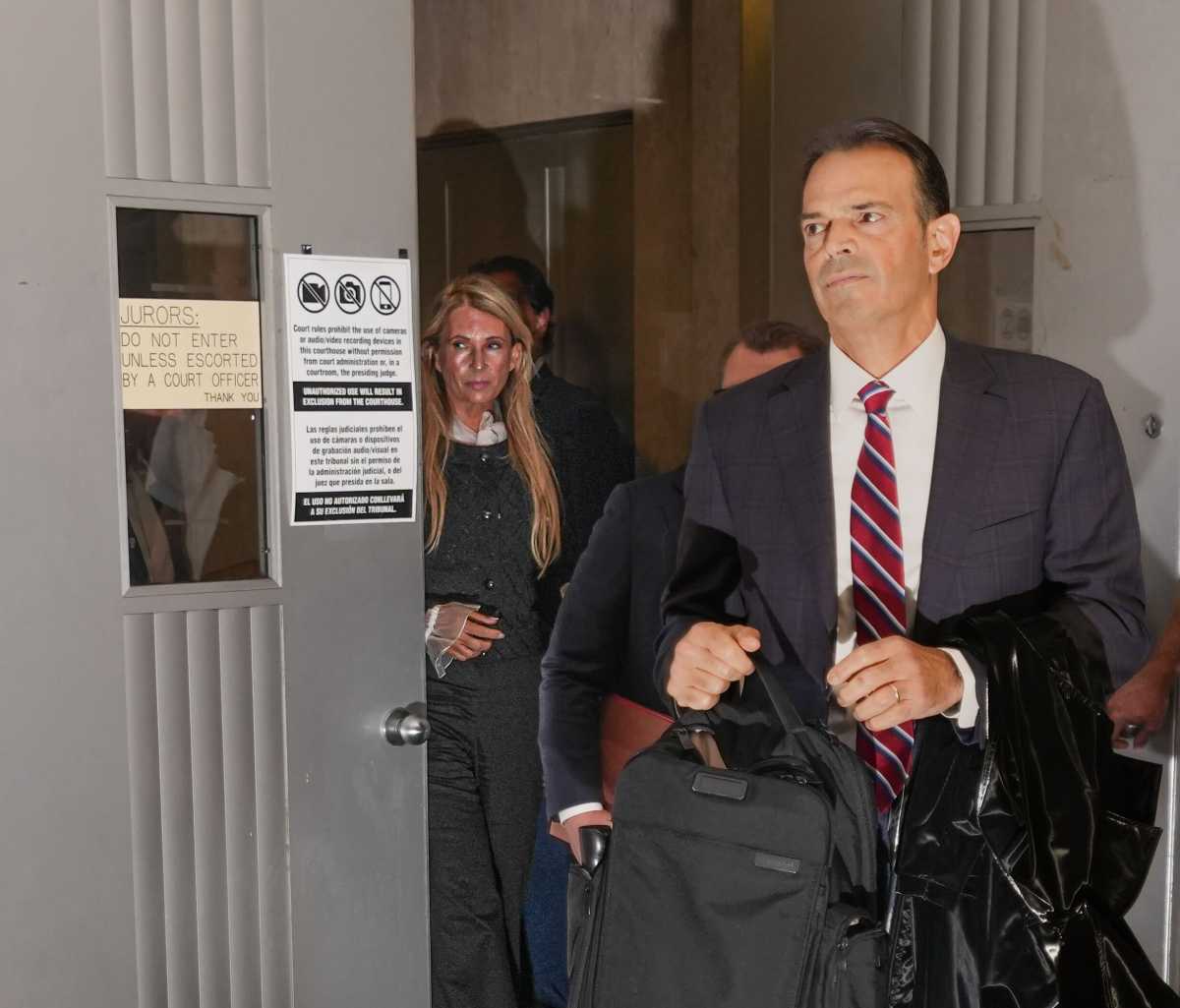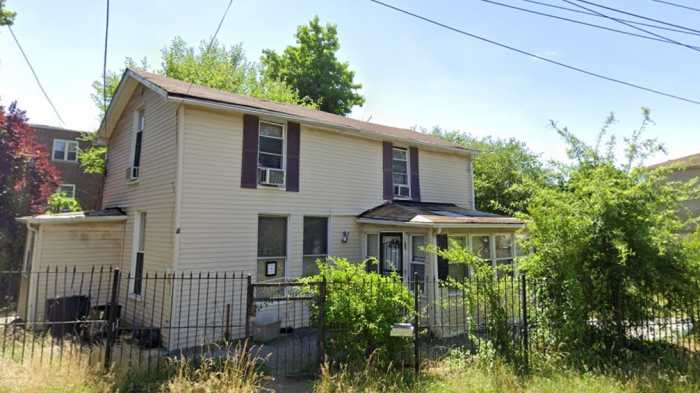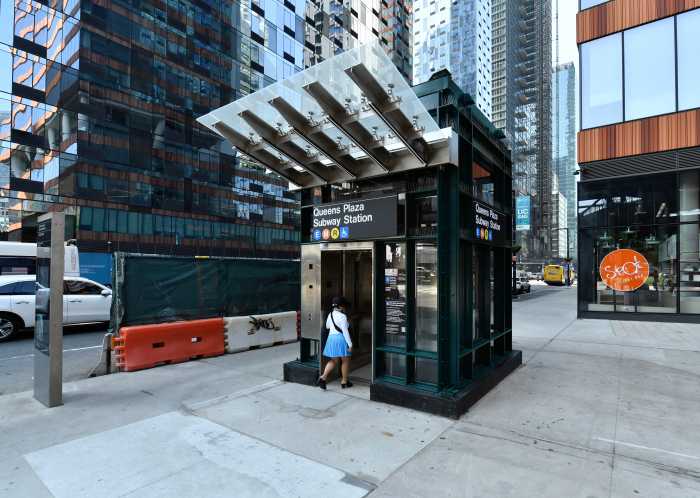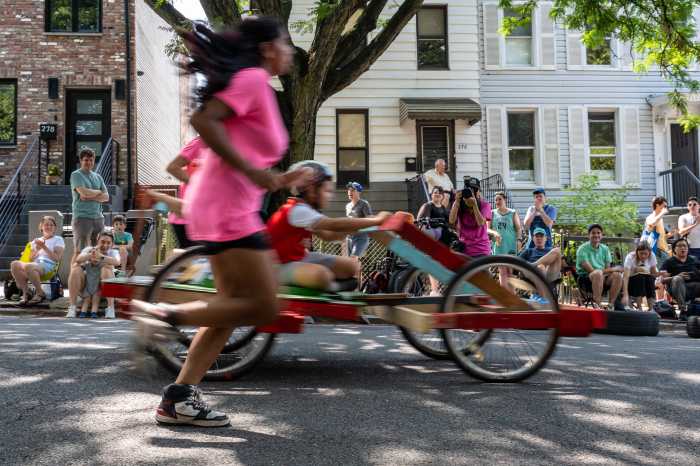By Hannah Seligson
Ever since Gifford Miller, the New York City Council speaker, and one of the four candidates vying for the Democratic nomination for mayor, was confronted with the question of whether he would send his son to public or private school when he enters kindergarten in September 2006, the topic has been stirring up debate among parents, educators and politicians. (Miller’s son is currently enrolled in private nursery school.)
The decision whether to send one’s kids to private or public schools is certainly not a new debate, particularly in the West Village where the private and public schools are so well regarded. For elementary school, parents can either send their kids to P.S. 3 or P.S. 41.
P.S 3 on Hudson St. houses 535 students in prekindergarten through the fifth grade. Fourth-grade students there have some of the highest test scores in the city: 74 percent of students read at or above grade level, while 82.4 percent perform at or above grade level in math.
Students at P.S. 41 on W. 11th St., which also has prekindergarten through the fifth grade, have even higher test scores. Some 79.8 percent of fourth-grade students read at or above grade level, while 90 percent perform at such levels in math. Many students from these schools go on to the Greenwich Village Middle School, in the P.S. 3 building on Hudson St.
Private school choices include St. Luke’s School, established in 1945 on Hudson St. on the grounds of the Episcopal Church of St. Luke in the Fields. There is also the Village Community School (V.C.S.) on W. 10th St.
The plethora of options for public and private schools has fueled the mantra of “I want to live Downtown” for a new generation of parents. Downtown, particularly the West Village, is no longer just for college students and young professionals, it has become an area more typified by baby strollers and well-dressed children than starving artists and leather.
Even with the abundance of good schools, the debate over public versus private still manages to stir emotions, as it is a topic that represents a confluence of economic, political, educational and social issues. Jill Tapia, a parent of a child at P.S. 41, an alumna herself and the president of the P.T.A., feels strongly about public education in the Village. As Tapia sees it, “Public schools in the Village are outstanding.”
However, even the strongest public school proponents, like Tapia, admit that private schools have smaller classes, and therefore can often provide students individual attention that a public school may not. Yet, Tapia, who spends seven to 10 hours a week at P.S. 41, says that “the teachers at P.S. 41 manage the class size very well.”
At private schools like St. Luke’s, a coeducational Episcopal day school that enrolls students of all faiths from junior kindergarten through grade 8, students have two teachers per class, which means that there are 10 to 11 kids per teacher. Don MacPherson, a member of Community Board 2 and a parent of two children at St. Luke’s, says that class size is the main reason he sends his kids to private school. “As I parent, that is the kind of attention I want for my kids,” he said. Another appeal of St Luke’s, for MacPherson was the beautiful campus and facilities that St. Luke’s offered.
In 1992 when Arthur Schwartz, the current Greenwich Village Democratic district leader, was deciding whether to send his kids to public or private school, “there were over 30 kids in kindergarten classes at public schools,” he recalled. V.C.S., where he decided to send his two older children, had 15 children in their kindergarten class, and they had a teacher and an assistant teacher. Schwartz, who is a top labor lawyer, admitted, though, “that it was a hard choice to send them to private school because I really believe in public education, having gone through the New York City public school system myself.”
Tamara Rowe, P.T.A. vice president at P.S. 3, agrees that class size is the biggest drawback to public school. “Class size makes it very hard,” she said. “However, we have a small class size grant for younger grades.” The problem of class size becomes more acute in middle school where Rowe said her daughter has 33 other children in her class. Rowe’s daughter, Lottie, attends Clinton Middle School for Writers and Artists, a public school in Chelsea.
The large class size is even more problematic for students, like Lottie, who have learning issues. “It’s really hard if you don’t learn the same way as everyone else. Teachers can’t target their instruction when they have 200 tests to grade,” Rowe said. To compensate for the large class size and lack of individual attention, Rowe has hired an outside tutor for Lottie.
However, even in extolling the virtues of public school, parents emphasize that public schools in the West Village don’t feel like the rest of the New York City public school system. “We feel like a small community,” Tapia said. “We don’t feel like a big, bureaucratic New York City school.”
With all the parent involvement at both P.S. 3 and P.S. 41, parents are able to pick up the slack of the city and state. Rowe acknowledges that P.S. 3 is probably somewhat of an anomaly among most New York City public schools. “You have highly involved parents who are invested and will raise money that the city won’t provide,” Rowe said. P.S. 3, for example, has a budget of $150,000 a year to supplement arts and science programming as well some support services, such as school aides and teacher startup funds. Similarly, P.S. 41 raised $100,000, in one day, at their annual auction to supplement their budget.
The effort provided by parents at P.S. 3 and P.S. 41 is a large part of the engine that drives both of these schools and makes them so successful. Rowe, for example, has been actively involved in lobbying the city for money they owe the school. This past year, she organized a bus of parents to go to Albany, the state capital, for school lobbying day. At other New York City public schools where parents have to work the night shift, or don’t have the economic resources to fundraise, the school has to rely solely on teachers and funding from the city and state — which often limits the resources available to students and impacts the quality of the school.
Underlying all of this debate about class size, test scores and funding are deeper issues about socioeconomic and racial diversity. For many parents, the most important currency of public schools is diversity. Stuart Richer, a parent of two children at P.S. 41, says that one of the most important things to him about sending his kids to public school is the diversity they are exposed to. “In public schools you have racial diversity, you have blind kids, you have kids with learning issues, you have kids of all types,” he said.
But parents who send their kids to private school are also equally concerned about diversity. MacPherson said when he was looking at private schools for his kids, “Diversity was an important part of the investigation and decision.” Private schools, like St. Luke’s, as MacPherson pointed out, can also offer students a place for spiritual development that public schools, by law, cannot. At St. Luke’s there is a chapel time, where students participate in a personal prayer session that is multidenominational. Schwartz said the experience of his two older children at V.C.S. “did not lack diversity.” However, Schwartz thinks that the “public school experience gives kids a broader perspective on the world. It shaped who I am in an important way,” he said.
Schwartz, who has two children who are not school age, thinks the decision on whether to send them to private or public school might be more difficult the second time around, in light of the fact that in 1992, when he sent his two older kids to V.C.S. it cost $5,000, compared to the $20,000 it costs now. “I’m optimistic that class sizes will get smaller, and, if at all possible, I would send my kids to public school,” he said.
Even parents like MacPherson who send their kids to private school, think highly of the public schools in the neighborhood. “There are really good public schools Downtown,” MacPherson said. But getting kids into someplace like P.S. 234, one of the city’s top-scoring schools, on Chambers St. in Tribeca, is often mired in bureaucracy, particularly if you don’t live in the catchment area. “To get my kids into P.S. 234, I would have to get some kind of written authorization because I don’t live below Canal St.,” MacPherson noted. “I don’t think that you should have to go to some kind of extraordinary length to get your kids into public school.”
At its core, the choice between private and public schools is a deeply personal one. For Richer, he feels that “public schools are what make America great. When immigrants first came to this country, they sent their kids public schools. I feel like kids miss out on what makes New York great if they don’t have that experience.”
On the other side of the coin are parents like MacPherson who believe private school offers them something public school cannot. “I would rather put my kids in a place with a beautiful campus, a great learning environment, extremely devoted teachers and small classes, than go out and spend $15,000 to $20,000 on a vacation.”
Rebecca Tapia, who is going into fourth grade at P.S. 41 in Greenwich Village, is continuing the legacy of her mother Jill, an alumna who is president of the school’s Parents Teachers Association and a staunch public education advocate.




























